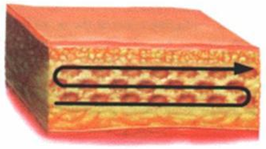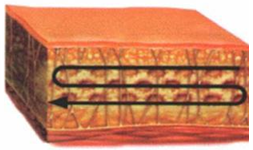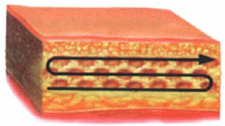Services

Body Sculpture with liposuction
Body Sculpture with Liposuction
(1).jpg)
Surgery Features
♦Feature .jpg)
Liposuction is not only intended to remove body fat. Body fat is an essential element that contributes to a pretty figure. The key lies in the location and amount of fat.
Removing all fat not only cannot achieve aesthetic goals, but also likely causes unnecessary complications that affect health. In fact, surgical risks can be minimized if you find the right specialist.
♦What is liposuction?.jpg)
Liposuction refers to a procedure performed to extract subcutaneous fat through a small incision on the skin (about 0.5cm) and a specially designed sucking tube. It is a type of therapy designed to improve the fat in local areas of the body, such as the unsightly “flabby arms”, lower body fat, ear, undesirable thigh and hip curves, etc. Many men and women not only pursue a slender body, but also demand detailed beautiful curves in different areas of the body, such V-shape face line, abdominal corsage line, six-pack muscles, hip lines, etc. These surgeries effectively remove deep subcutaneous fat through only a small wound. Complications are generally kept to a minimum if performed by a specialized surgeon.
 |
 |
| American liposuction: Fat is extracted inwards, from the superficial layer to the deep layer. During extraction, the smoothness of the epidermis and the thickness of the two sides of the skin and satisfaction should be noted. | Ultrasonic liposuction: Through sonic oscillation, fat is extracted from the superficial layer to the deep layer. Extraction is done while oscillating until the extraction site is free of resistance. |
♦Comparison of Common Liposuction Procedures..jpg)
|
Item |
Laser-Assistedlipectomy |
Water Blade Liposuction |
American Liposuction |
|
Suitable Targets |
Also known as local fat dissolution, it is intended for small areas (such as double chin, flabby arms). |
It is intended for local or a large amount of liposuction |
It is intended for local or large amount of liposuction |
|
Anesthesia Method |
Local anesthesia or sedation anesthesia |
Local anesthesia or sedation anesthesia; general anesthesia is recommended for the largest site. |
Local anesthesia or sedation anesthesia; general anesthesia is recommended for larger sites. |
|
Surgical Procedure |
Fat layers are destroyed through the thermal energy of laser. A small portion of the nerves and blood vessels is prone to damage. The thermal energy of laser can help firm up the skin tissue. |
Fat cells are broken up through hydraulic force; the nerves and blood vessels can be retained. |
After pumping in expansion fluid, liposuction at a negative pressure is done to destroy the fat layers; the nerves and blood vessels are prone to damage. |
|
Surgical Wound |
About 0.5cm |
About 0.5cm |
About 0.5cm |
|
Immediate Result |
No immediate result |
Immediate result |
Immediate result |
|
Recovery Period |
Slight discomfort; swelling reduction after about one week |
Less pain, swelling subsides after about 2-3 weeks |
More painful, prone to bruising, swelling subsides after about one month. |
|
Postoperative Pain |
Not much pain |
Slight pain |
Severe pain |
|
Corsage |
A corsage should be worn for 1-3 months. |
A corsage should be worn for 1-3 months. |
A corsage should be worn for 3-6 months. |
♦Unsuitable Targets for Liposuction.jpg)
1.Those with disease-induced morbidity obesity are excluded from the scope of liposuction therapy.
2.Those with poor heart, liver, lung, and kidney function.
3.Elderly aged above 50 and adolescents still undergoing development.
4.Women with abdominal blood clotting mechanism and menstruating women are not allowed to undergo liposuction.
♦Suitable Sites for Liposuction.jpg)
The most suitable areas are the areas with a deep subcutaneous fat structure, such as lower abdomen, thighs, back of upper arms, waist side, the inner side of the knee, and so on. Usually, only one surgery is needed achieve obvious results. Excessive fat extraction in one session may result in skin sagginess and unevenness as well as lengthened recovery time, which may greatly burden the body.
Surgical Approach
A liposuction tube is placed subcutaneously; a hollow titanium tube is inserted at the skin incision area and deep in the subcutaneous layer. Through the vacuum liposuction machine, most of the deep subcutaneous fat can be extracted. Formulated expansion fluid is first pumped into the tissue, then, the liposuction machine (vacuum suction device) that generates a negative pressure is used to suck fat out through a wound that is about 0.5~1cm in size, achieving fat extraction in an appropriate amount from the liposuction sculpture site. The success of the surgery will depend on the surgeon’s expertise and professional touch.

Precautions
| 1.A corsage should be worn for six weeks to three months. |
| 2.Normal activity is allowed after surgery. However, do not commence strenuous exercise until two weeks later. |
| 3.Avoid eating foods that are too salty or herbal medicine that promotes blood circulation to prevent swelling and bruising. |
| 4.Elevate the surgical site during sleep to facilitate blood circulation. |
| 5.Commence diet control coupled with suitable exercise after surgery to ensure lasting liposuction results and better skin elasticity. |
| 6.Massage the site after surgery for bruising to subside faster and even distribution of subcutaneous fat. |
| 7.Do no take Aminoglycoside or Spectinomycin conjunctively. Nerve/muscle medication administered should be in very small doses, if any. |
Q&A
Q:What type of people can achieve better liposuction results?
A:Those whose body weight does not exceed 30% of their ideal weight and demonstrate good skin elasticity will achieve the best liposuction sculpting results.
Q:What is the best type of liposuction?
A:There are many liposuction procedures. A professional surgeon should carry out detailed assessment to find the procedure most suitable for each individual. Surgery should be performed by a specialized surgeon to achieve safe and effective results.
Q:What are the main complications associated with liposuction?
A:1.Postoperative subcutaneous bruising occurs. This is caused by ruptured capillaries during liposuction, and the bruising usually disappears within two weeks.
2.Edema may occur at the surgical site after surgery due to tissue injury and residual subcutaneous puss. Swelling reduction is usually faster, after about 3-5 days.
3.There may be detectable scleromas or complete suction site hardening after surgery, due to subcutaneous tissue damage, leading to the formation of inflammatory nodules, hematoma, or fat liquefaction. They are generally absorbed and softened within three months.
Q:Is liposuction safe?
A:The safety of liposuction is determined by two major factors: the amount of fat extracted the health condition of the patient. Of the very few cases of liposuction-related sequaelae in the past, most of them are due to the patient’s undesirable physical health state, such as higher age, diabetes, heart weakness, and incomplete liver or kidney function, coupled with excessive fat extraction. Liposuction is generally a very safe cosmetic surgery item, as long as the surgeon and anesthetist conduct detailed assessment of the patient’s physical health state.
Q:Does liposuction require hospitalization? How much fat can be extracted every time?
A: Either local or general anesthesia is administered for liposuction surgery, depending on the area coverage. Patients are generally discharged from the clinic on the same day. If multiple areas require liposuction, liposuction on these areas may be performed after six weeks. The current liposuction surgery causes minimum bleeding. It is recommended that fat not exceeding 5,000ml is extracted each time.
Q: If my entire body is fat, can I resort to liposuction to lose weight?
A:Liposuction is not the same as weight loss. If according to the judgment of your surgeon, you have an overweight body, we recommend that you start with diet and exercise as the main approaches to lose weight. You may consider liposuction when your weight drops to a certain level and that there is still irremovable fat. For the sake of your health, try to lose weight step by step, rather than doing it hastily.
Q:Will my skin become sagging after surgery?
A:As long as your skin elasticity is normal, with massage courses and by complying with the surgeon’s instruction to wear a corsage, skin sagging will not occur after surgery.
Q:Will I become fat again after undergoing liposuction?
A:The number of fat cells at the liposuction site will be greatly reduced after liposuction. The slimming result can be maintained if you do not eat too much and exercise moderately.
Q:Should I a corsage be worn after liposuction?
A: It is recommended that you wear a corsage 24 hours a day for the first two months and after that wear it either during the day or at night. Because the space where fat has been extracted may easily be occupied by extracted fat cells, there is certainly a need to compress the space.
Case
♦Case
 |
|
 |
|
♦Case
 |
|
 |
|
 |
|
♦Case
 |
|
♦Case
 |
|
♦Case
 |
|